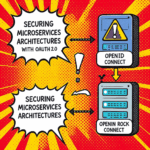The security of blockchain technology is paramount to its widespread adoption and success. This article delves into the advanced cryptographic techniques that underpin blockchain’s resilience and explores how these mechanisms protect against various attacks. We will examine the core cryptographic primitives, discuss the role of consensus mechanisms in enhancing security, and analyze common attack vectors and the strategies employed to mitigate them. Furthermore, we will explore the ongoing evolution of cryptographic methods in the blockchain space and consider future trends that promise even greater security. Understanding these aspects is crucial for anyone involved in developing, implementing, or utilizing blockchain-based systems, ensuring confidence in their integrity and reliability.
Cryptographic Foundations of Blockchain
At the heart of blockchain security lies cryptography. Hash functions, like SHA-256, are fundamental. These functions take input data of any size and produce a fixed-size output, a hash, that is computationally infeasible to reverse engineer. Any change in the input, however small, results in a drastically different output. This property ensures data integrity; if a hash changes, it indicates tampering. Public-key cryptography, based on asymmetric key pairs (public and private keys), is another cornerstone. Digital signatures, generated using private keys, verify the authenticity and integrity of transactions. Public keys, readily available, allow anyone to verify these signatures. The combination of these ensures that only the legitimate owner of a private key can authorize transactions.
Consensus Mechanisms and Their Security Implications
Blockchain’s distributed nature relies on consensus mechanisms to validate and add new blocks to the chain. Proof-of-Work (PoW), famously used by Bitcoin, requires miners to solve computationally intensive problems to add blocks, making it costly and time-consuming to alter the blockchain. Proof-of-Stake (PoS), an alternative, selects validators based on their stake in the network, reducing energy consumption. Both mechanisms introduce different security trade-offs. PoW is generally considered more resistant to 51% attacks (where a single entity controls more than half the network’s hash power), but is significantly more energy-intensive. PoS, while more efficient, can be vulnerable to different types of attacks, like stake-pooling, if not properly implemented. The choice of consensus mechanism directly impacts the overall security of the blockchain.
Common Attack Vectors and Mitigation Strategies
Despite robust cryptographic foundations, blockchains are susceptible to various attacks. 51% attacks, as mentioned earlier, represent a significant threat. Sybil attacks attempt to create numerous fake identities to gain undue influence in the network. Double-spending attacks aim to spend the same coin twice. Mitigation strategies include robust consensus mechanisms, network monitoring systems for detecting anomalies, and sophisticated transaction validation procedures. Furthermore, regular security audits and code reviews are crucial to identifying and patching vulnerabilities before they can be exploited.
Smart Contracts and Decentralized Applications (dApps) Security
Smart contracts, self-executing contracts with the terms of the agreement directly written into code, introduce new security challenges. Bugs in smart contract code can lead to significant vulnerabilities. Reentrancy attacks, for example, allow malicious contracts to repeatedly call functions within a vulnerable contract, draining its funds. Formal verification techniques, rigorous code audits, and the use of secure programming languages can significantly mitigate these risks. The security of dApps, built upon these smart contracts, is equally critical and relies heavily on the underlying blockchain’s security and the secure implementation of the smart contracts themselves.
The Future of Blockchain Security
The field of blockchain security is constantly evolving. Post-quantum cryptography, designed to withstand attacks from quantum computers, is a key area of research. Zero-knowledge proofs offer a way to verify information without revealing the underlying data, improving privacy. Homomorphic encryption enables computations on encrypted data without decryption, advancing secure data processing. These advancements promise to enhance blockchain’s security significantly, addressing emerging threats and strengthening its position as a robust and trustworthy technology. Continued research and development in these areas are essential to ensuring the long-term security and viability of blockchain systems.
In conclusion, blockchain security relies on a multi-layered approach encompassing robust cryptographic techniques, secure consensus mechanisms, and diligent mitigation of various attack vectors. From the fundamental principles of hash functions and public-key cryptography to the complex interplay of consensus algorithms and smart contract security, each element contributes to the overall resilience of the system. The ongoing advancements in cryptography and security protocols promise a future where blockchain technology is even more secure and reliable, further enabling its widespread adoption across various sectors. Understanding these complexities and implementing appropriate security measures are critical for building trust and fostering the continued growth of the blockchain ecosystem.
References:
Image By: Black Forest Labs






